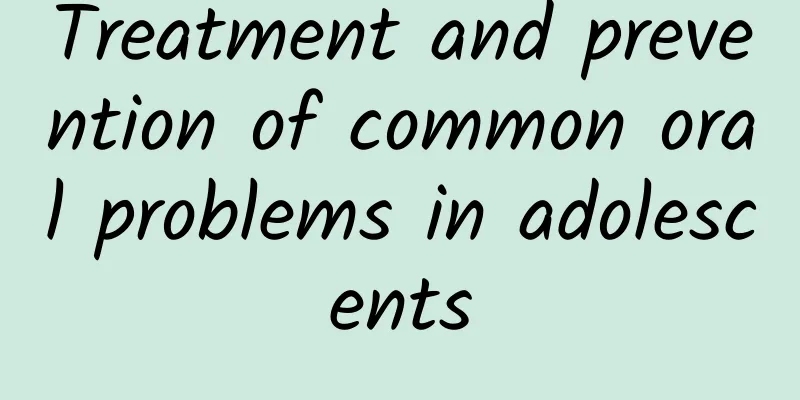How accurate is Down syndrome screening?

|
Pregnant mothers who have some knowledge of Down syndrome screening should know that Down syndrome screening is to check the probability of the baby suffering from Down syndrome, rather than to get the result of whether the baby is Down syndrome. So how accurate is Down syndrome screening? How do you view the Down syndrome screening results? Follow the editor to learn and master a lot of professional knowledge about Down syndrome screening! How accurate is Down syndrome screening? Obstetric experts say that Down syndrome screening can detect 60-70% of Down syndrome patients. It needs to be made clear that the Down screening test can only help determine the chance of a fetus having Down syndrome, but it cannot confirm whether the fetus has Down syndrome. In other words, when the blood test index value is high, the chance of having a baby with Down syndrome is higher, but it does not mean that the fetus must have problems. It seems that older pregnant women over 35 years old have a higher chance of having a baby with Down syndrome, but it does not mean that their fetuses must have problems. On the other hand, even if the test indexes are normal, it cannot guarantee that the fetus will definitely not get sick. Pregnant women whose Down syndrome screening index value is higher than normal should undergo amniocentesis or chorionic villus sampling. Only if the results of amniocentesis or chorionic villus sampling are normal can the possibility of Down syndrome be 100% ruled out. The Down syndrome screening results at the hospital only indicate the probability of having a Down syndrome baby, not that high-risk babies will definitely have problems. For example, the risk of trisomy 21 is 1/100, which means that the probability of a baby with congenital idiocy caused by a genetic mutation in chromosome 21 is 1/100. Maybe you are the 1/100 who have problems, or you may be the 99/100 who are fine. Low risk does not mean that the baby will definitely be fine. Even if the risk is 1/10000, there is still a one in ten thousand chance. Therefore, the fetuses of high-risk pregnant women are not necessarily idiots; and the fetuses of non-high-risk pregnant women are not necessarily not idiots. Although the Down syndrome screening results cannot accurately determine whether the baby is mentally retarded, it is the most economical, simple and harmless test method for the fetus to determine whether the baby is mentally retarded. If the result is abnormal, amniocentesis can be performed further. In my country, approximately a baby with Down syndrome is born every 20 minutes. Children with Down syndrome are completely unable to be independent in their daily lives due to their severely low IQ. They also suffer from multi-system complications and cannot be cured throughout their lives, thus bringing heavy mental and financial burdens to their families. Therefore, it is necessary to go to the hospital for Down syndrome screening. How to judge the results of Down syndrome screening? Authoritative experts explain: The Down syndrome screening test examines the concentrations of alpha-fetoprotein (AFP), human chorionic gonadotropin (β-HCG), free estriol (uE3) and inhibin A in the pregnant woman's blood, and combines the actual age of the pregnant woman to use a computer to accurately calculate the risk of each pregnant woman having a fetus with Down syndrome. The normal range of alpha-fetoprotein (AFP) is 0.7-2.5MOM. The higher the level of chorionic gonadotropin, the lower the level of free estriol (uE3) and the higher the level of inhibin A, the higher the chance that the fetus may suffer from Down syndrome. These are also the relevant criteria for doctors to make judgments. In addition, the doctor will also enter the alpha-fetoprotein value, human chorionic gonadotropin value, free estriol value and inhibin A value as well as the pregnant woman's age, weight and gestational age into the computer, and the computer risk assessment software will calculate the risk factors of the fetus having Down syndrome. Different hospitals use different standards. If the probability marked by the test result (such as 1/100) exceeds the normal standard probability (such as 1/275), the result is positive, indicating that the probability of the fetus being sick is high, and amniocentesis or chorionic villus sampling should be further performed. |
<<: What is the accuracy of non-invasive DNA
>>: How accurate is the Qing Palace Table?
Recommend
What to do for second degree cervical erosion?
We all find it scary to hear about double cervica...
What should girls do to lift their hips and slim their legs?
Many women want to have a perfect body because bo...
Treatment for 50 days of pregnancy without embryo bud
We all know that the incidence of diseases is inc...
This disease is widely hidden in the population, causing great harm, but few people know about it.
The cause of hypochondriasis is still unknown. Hi...
Why is my period delayed by a week every time?
Delayed menstruation is a very troubling thing fo...
Causes of red bumps on the vulva
As the pace of life accelerates nowadays, it seem...
ECPR: How to save lives in emergencies?
ECPR: How to save lives in emergencies? According...
What to do if estradiol is too low
Estradiol is a natural female hormone in the huma...
When is the ovulation date for menstruation on the 11th?
The ovulation period is a relatively special stag...
How many days does it take to bleed after a cervical biopsy?
It is very necessary to go to the hospital regula...
The best way for women to remove moisture
Excessive moisture in the body is particularly ha...
Is it normal to have chest pain during menstruation?
There are a few days of menstruation every month,...
How long does the pain of medical abortion last?
There are many families who have babies but becau...
The weather is cooler every night during Bailu. Learn about these disease prevention and health knowledge
On September 8, we ushered in the "White Dew...
Side effects of endocrine therapy for breast cancer
In fact, if breast cancer is discovered in time i...









